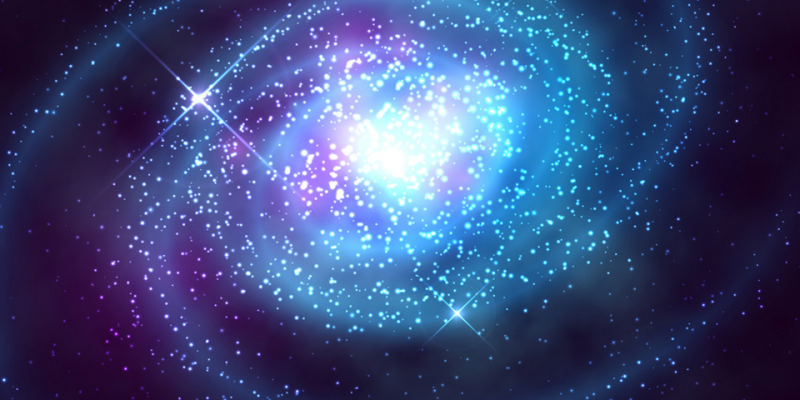
In the beginning, we get to set very essential nomenclature – Cosmic Microwave Background (CMB) – to explain and illustrate the big bang:
The Cosmic Microwave Background (CMB) Radiation:
The CMB is thought to be the residual radiation from the Big Bang or the point in time the universe began. According to the theory, the universe underwent rapid expansion and expansion following its birth (and today the universe is still expanding, and the rate of expansion varies according to where you look).
The CMB is the representation of the heat leftover from the Big Bang. You cannot see the CMB with the naked eye, but it is found everywhere in the universe.
They are invisible to humans because they are so cold, with a temperature of only 2.725 degrees above absolute zero (i.e. -459.67 degrees Fahrenheit, or -273.15 degrees Celsius), meaning that their radiation is best visible in the microscopic part of the electromagnetic spectrum.
Origin and discovery of CMB:
According to NASA, the universe began 13.8 billion years ago, and the CMB dates back about 400,000 years after the Big Bang. This is because in the early stages of the universe when it was about a hundred millionth of its current size, it was very hot: 273 million degrees above absolute zero.
Any atoms present at that time were quickly divided into small particles (protons and electrons). The radiation of the photons from the CMB (and the photons are particles representing the amounts of light or other radiation) was propagating away from the electrons. “Thus, the photons wandered through the early universe, just as visible light passed through the dense fog,” NASA wrote.
The universe was cool enough to allow the formation of hydrogen about 380,000 years after the Big Bang. And because the CMB photons are barely affected when hitting hydrogen, the photons travel in straight lines.
Cosmologists call the term “last scattering surface” when the CMB photons finally collide with the matter, after which the universe becomes very large. So when we map out the CMB, we’re looking back at 380,000 years after the Big Bang, just after the universe was impermeable to radiation.
According to NASA, American cosmologist Ralph Apher was the first to predict the existence of the CMB in 1948, when he was working with Robert Herman-Robert Herman and George Gamow.
The team has been researching the nuclear synthesis of the Big Bang, or the production of elements in the universe plus the lighter isotopes of hydrogen. This type of hydrogen was formed very early in the history of the universe.
Robert Wilson discovered the cosmic microwave background (CMB) in 1964 along with Arno Penzias, placing the Big Bang theory on a solid foundation. Wilson and Penzias won the 1978 Nobel Prize in Physics for that discovery. (They shared the award with the Soviet scientist Pyotr Kapitsa).
But the CMB was first discovered to be a coincidence. In 1965, two researchers at Bell Telephone Laboratories (Arnaud Penzias and Robert Wilson) created a radio receiver and were baffled by the noise it was picking up.
They soon realized that the noise was received uniformly from all parts of the sky. Meanwhile, a team from Princeton University (led by Robert Dicke) was trying to find the CMB. Dickie’s team revealed a secret from Bell’s experiment, and they realize he has found the CMB.
Soon, the two teams published their research in the Astrophysical Journal in 1965, with Penzias and Wilson talking about what they had seen, and Dickey’s team explaining what it meant for the universe. (Later, Penzias and Wilson were awarded the Nobel Prize in Physics in 1978).

Cosmic Microwave Background (CMB) (Image Source: Wikipedia)
Elaborated Study :
The CMB is useful to scientists because it helps us understand how the early universe was formed. It has a uniform temperature with only tiny oscillations visible with fine telescopes.
“By studying these oscillations, cosmologists can inform the science of both the origin of galaxies and the structures of large size in galaxies, and they can measure the basic parameters of the Big Bang theory,” NASA wrote.
While details of parts of the CMB were determined in the decades after its discovery, the first complete space map of space came from NASA’s Cosmic Background Explorer (COBE) mission, which began in 1989 and ceased scientific operations in 1993.
This “humble picture” of the universe, as NASA calls it, confirmed the predictions of the Big Bang theory, and also showed hints of a cosmic makeup that had not been seen before. In 2006, the Nobel Prize in Physics was awarded to COBE scientists: John Mather at NASA’s Goddard Space Flight Center, and George Smoot at the University of California, Berkeley.
A more detailed map appeared in 2003 by the Wilkinson Microwave Anisotropy Probe (WMAP), which launched in June 2001 and stopped collecting scientific data in 2010.
The first image puts the age of the universe at 13.7 billion years (which is a good measure) From then to 13.8 billion years, and it also revealed the surprise that the oldest stars began to light up about 200 million years after the Big Bang, much earlier than expected.
Scientists followed these results by studying the very early stages of the universe’s inflation (at a trillionth of a second after formation), and by giving more accurate parameters of the density of the atom, the mass of the universe, and other properties of the universe shortly after its formation.
They also noticed a strange asymmetry in the average sky temperatures in both hemispheres, in addition to the presence of a “cold spot” that exceeded expectations in terms of its size. The WMAP team received the 2018 Achievement Award in Fundamental Physics for their work.
In 2013, data from the European Space Agency’s Planck space telescope was released, showing the highest-resolution image yet of the CMB. Scientists have uncovered another mystery with this information: oscillations in the CMB at large angle ranges do not match expectations.
The Planck telescope also contemplated what WMAP saw in terms of asymmetry and cold spot. The final release of Planck telescope data in 2018 (the mission that took place between 2009 and 2013) showed more evidence that dark matter and dark energy – the mysterious forces that may be causing the universe’s acceleration – seem to be in place.
Other research efforts have been made to look at different aspects of the CMB, including identifying the types of polarization called E-patterns (discovered by the Degree Angular Scale Interferometer found in Antarctica in 2002) and B patterns.
Patterns B can be produced by gravitational lensing of E patterns (this lenticular application was first seen by the South Pole Telescope in 2013) and gravitational waves (first observed in 2016 using a gravitational-wave observatory and an advanced laser interferometer – Advanced Laser Interferometer. Gravitational-Wave Observatory, or LIGO for short).
In 2014, the BICEP2 instrument at the South Pole was said to have found B-patterns of gravitational waves, but additional observations (including observations from the Planck satellite) showed that these results were the result of cosmic dust.
As of mid-2018, scientists were still searching for the signal that showed a brief period of rapid expansion of the universe shortly after the Big Bang. At the time, the universe was expanding at a rate faster than the speed of light. If true, researchers suspect it should be visible in the CMB through some form of polarization.
A study conducted that year indicated that a glow from a nanodiamond emits a faint, but distinguishable light that interferes with cosmic observations. Now that this glow is taken into account, future research could remove it to better explore the slight polarization in the CMB, the study authors said at the time.
Now after we circumnavigated, and get the important knowledge let us go on the main road:
A cosmic gamma-ray beam has been detected penetrating the Milky Way, carrying the highest energy ever, up to 957 MeV. These rays carry energy equal to more than twice the value of energy previously observed in the universe, close to the beta electron volt range, or quadrillion electron volts.
This confirmed the existence of super atomic accelerators in the universe that could push photons to these levels of energy in the Milky Way. These super-accelerators are called “Beaverton”, and their discovery helps determine why super-energetic gamma rays propagate through the galaxy.
“This work opens up prospects for the exploration of distant space,” said physicist Jin Huang of the Chinese Academy of Sciences. The observed evidence is an important step towards explaining the source of cosmic rays that have puzzled humanity for a century.
The detected beam of radiation is the highest energy among the 23 sets of beams discovered by the team, with more than 398 terra electron volts of energy in “Asgama”, a facility in Tibet that has been run by Japan and China since 1990.
Strangely, unlike previously recorded energy beams, these 23 beams of gamma rays do not return to an apparent source but are scattered across the galactic disk.
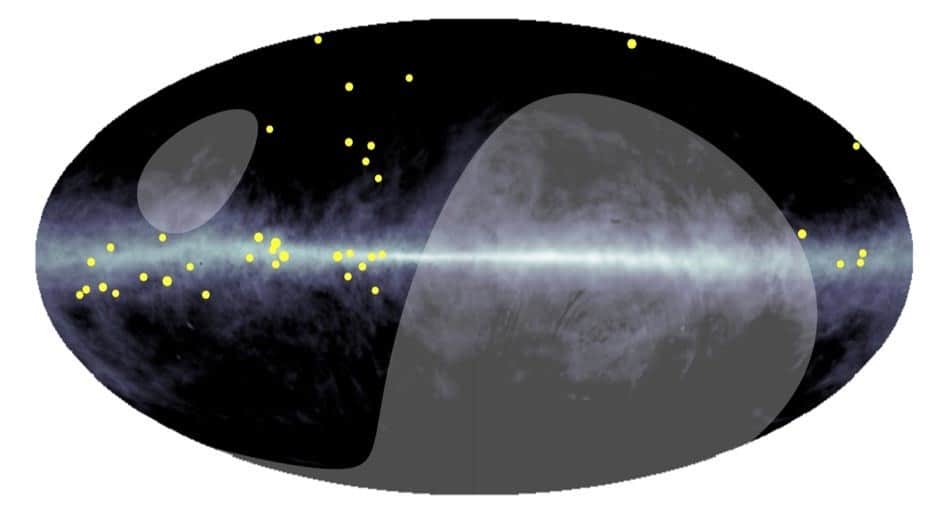
Gamma Radiation in the Universe (Image Source: Physics World)
The previous image shows the galactic plane represented by the glowing line in the middle, and the gray areas represent the areas outside the ASGAMA observation range.
It may be possible to find the areas to look for the Beaverton in the Milky Way, which will lead us to discover the source of the high-energy cosmic rays.
First, we must differentiate between cosmic rays and gamma rays. Cosmic rays are particles such as protons and atomic nuclei that flow through space at a speed close to the speed of light.
It is believed that super-energy cosmic rays come from sources such as supernovae and their remnants, star-forming regions, and black holes, as strong magnetic fields help to accelerate particles, but it is difficult to confirm any of these assumptions by observation because cosmic rays are electrically charged, and thus are affected Magnetic fields as it travels through the galaxy.
Cosmic rays interact with the interstellar ocean as gases and interstellar dust swimming in the interstellar space, producing high-energy gamma-ray photons, with about 10% of the original cosmic-ray energy.
This occurs close to Beaverton, and gamma rays are known to have no electric charge, which causes them to travel in space without being affected by magnetic fields.

Ground sensor array in Tibet (Image Source: Science)
When gamma rays hit our atmosphere, they leave a torrent of non-dangerous particles, which is what the ground-based sensor array detects.
Cherenkov groundwater detectors were added in 2014 to detect Muons produced by cosmic beams, allowing scientists to extract information about gamma-rays in the background, to develop the process of detecting and monitoring gamma-ray showers without interference.
In this way, the gamma rays of the Crab Nebula were detected, and the 23 gamma-ray beams contained super-energy levels.
According to the researchers, the distribution and presence of the rays indicate the presence of accelerated protons in the 10 PeV range, indicating the spread of Biphatrons throughout the galaxy.
The next step is to try to find the Biphatrons, some of which might have disappeared and are no longer active, leaving evidence in the form of cosmic rays and gamma rays.
“We can only see the fingerprints left by the dispersed Biphatrons, as the cosmic rays they left behind spread out in the vicinity of the galactic disk,” said astronomer Masato Takita.
If we can pinpoint an active site of a Pivatron, we may answer more questions:
What kind of star radiates gamma rays with Pico-electron volt energy and the associated cosmic rays? How does a cosmic ray star accelerate to electron volt Pico energy? How do the rays spread inside the disk of our galaxy?
We may find more than one answer to each of these questions, and future research and highly efficient detectors may help find answers that satisfy our curiosity.
Suggested Reading: Does the universe have a specific pattern?
Author
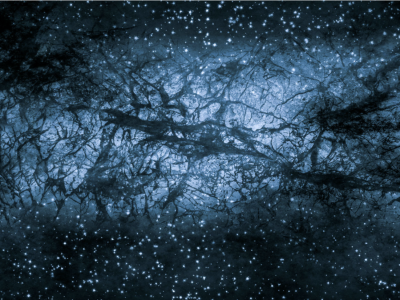



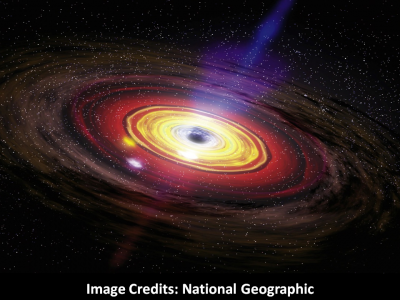

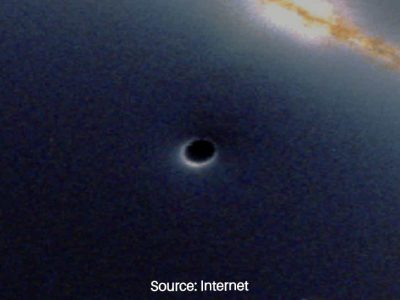

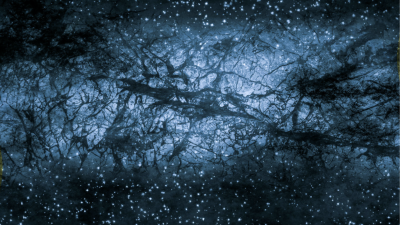
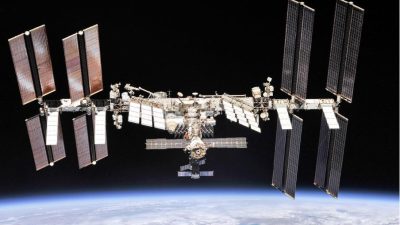



[…] Suggested Reading: The Discovery of the first super atomic accelerator in our Galaxy […]